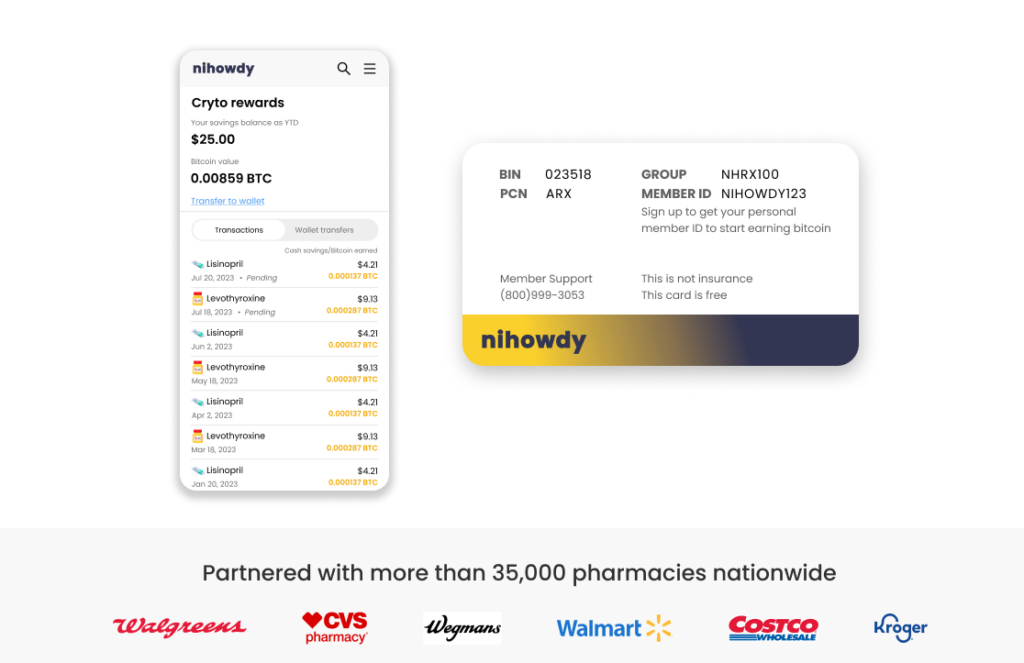Understanding What is the Difference Between Atorvastatin and Rosuvastatin: A Clear Comparison

What is the difference between atorvastatin and rosuvastatin? These two statins are key players in cholesterol management, but knowing their distinct impacts on LDL cholesterol levels, their side effect profiles, and how they interact with other medications is essential. This article unpacks these critical differences to help you understand which statin might be the right choice for your health needs.
Key Takeaways
Rosuvastatin is more potent and effective than Atorvastatin in lowering LDL cholesterol levels, providing a greater average reduction and achieving treatment goals with lower doses and fewer dose adjustments.
While both statins have similar efficacy in reducing major cardiovascular events, Rosuvastatin has advantages in metabolism stability and fewer drug interactions, as it’s less affected by the CYP3A4 enzyme than Atorvastatin.
Patient-specific factors, such as the risk of new onset diabetes with Rosuvastatin and potential muscle toxicity with Atorvastatin, must guide personalized treatment decisions, along with considerations of lifestyle factors like grapefruit juice consumption.
Exploring the Role of Statins in Cholesterol Management

Statins, such as Atorvastatin and Rosuvastatin, stand at the forefront in combating high cholesterol levels. These diligent agents play a crucial role by performing several functions:
They block cholesterol synthesis within the liver
Assist with its clearance from our bloodstream
And importantly, they reduce inflammation inside artery walls – a fundamental process that can precipitate cardiovascular events.
Clinical evidence demonstrates that statins effectively diminish vascular incidents and overall mortality rates. By substantially cutting down on episodes of heart attacks – including acute myocardial infarction – as well as strokes, these medications act not merely as regulators of lipid levels, but also serve to safeguard lives, proving particularly beneficial for individuals who face an elevated threat of cardiac or cerebrovascular crises.
When examining closer into this class of drugs, we recognize their unique characteristics. Not all statins are identical. Take Atorvastatin and Rosuvastatin — two extensively prescribed variants — for instance: what sets them apart? It is time to delve into specifics about each one’s distinctive properties.
Atorvastatin vs. Rosuvastatin: Unveiling the Distinctions

Various brand names offer Atorvastatin and Rosuvastatin in an array of strengths. Typically, Rosuvastatin possesses a higher efficacy than Atorvastatin when it comes to reducing levels of low-density lipoprotein (LDL) cholesterol. Nevertheless, this reduction is contingent upon the dosage as well as specific patient characteristics.
For clarity on how these two statins differ, attention should be given to crucial details such as their dose efficiency and potency, their metabolism process along with potential drug interactions they may have, and importantly, how they influence high-density lipoprotein (HDL) cholesterol. This exploration into these critical factors will provide deeper insight.
Dose Efficiency and Potency
In terms of strength, on a per milligram basis, Rosuvastatin is considered more powerful than Atorvastatin. Over the course of a three-year research period, individuals took an average daily dose of 17.1 mg of Rosuvastatin and 36.0 mg of Atorvastatin. Despite the lower dosage, greater reductions in LDL cholesterol levels were observed with Rosuvastatin.
Rosuvastatin also had the advantage when it came to adjusting doses to meet targets for LDL cholesterol (LDL-C). It demanded fewer adjustments compared to Atorvastatine—a notable benefit as this could lead to reduced frequency in clinical visits for modifying dosages and potentially enhance patient compliance with their medication regimen.
Metabolism and Drug Interactions
A key distinction between Atorvastatin and Rosuvastatin is their respective metabolic processes. While the CYP3A4 enzyme predominantly metabolizes Atorvastatin, Rosuvastatin’s metabolism is scarcely impacted by this enzyme. This minor role of CYP3A4 in the metabolism of Rosuvastatin offers it a comparative advantage in safety with respect to interactions with other drugs and foods.
Due to its more potent attachment to HMG-CoA reductase coupled with an extended half-life in plasma, Rosuvastatin showcases a stable and consistent influence on metabolism when juxtaposed with Atorvastatin. Essentially, what this implies is that the effects exerted by Rosuvastatin within your body tend to be steadier and more foreseeable.
Impact on High Density Lipoprotein Cholesterol

High-density lipoprotein (HDL) cholesterol, commonly known as the ‘good cholesterol,’ plays a vital role in combating high blood cholesterol by minimizing the accumulation of low-density lipoprotein (LDL) cholesterol within arteries. To support cardiac health, it’s ideal to have an HDL level exceeding 45 mg/dL. Drugs like Rosuvastatin and Atorvastatin can elevate levels of HDL cholesterol, though their impact might differ.
The findings from the STELLAR trial showed that Rosuvastatin was associated with an increase in high density lipoprotein cholesterol ranging from 7.7% up to 9.6%, surpassing Atorvastatin which only elevated these levels between 2.1% and 6.8%. These results suggest that Rosuvastatin could contribute more significantly towards achieving lipid profiles less conducive to atherogenesis and thus may be more effective at lowering the risk for cardiovascular disease.
Clinical Evidence: Comparative Studies and Trials
Clinical trials serve as the foundation for understanding how medications work and are applied in real-world medical settings. These studies assess drug efficacy within a regulated environment. When considering Rosuvastatin and Atorvastatin, research has provided enlightening outcomes.
When comparing rosuvastatin versus atorvastatin, it is found that rosuvastatin Delivers a more considerable reduction in LDL-C over various doses, averaging an 8.2% greater decrease in LDL cholesterol levels than its counterpart. Rosuvastatin enabled a larger proportion of patients to meet their treatment goals for LDL cholesterol compared with those taking atorvastatin.
Significantly, beyond lowering LDL-C levels more effectively than Atorvastatin, Rosuvastatin also displayed superior performance by enhancing overall lipid profiles better reducing the index of atherogenicity (a marker of heart disease risk) and adjusting inflammatory biomarkers favorably. However,in terms of effects on combined clinical outcomes such as all-cause mortality, stroke or coronary revascularisation events, neither medication showed any significant difference from each other indicating parallel efficiency between them preventing major cardiovascular incidents despite varied impacts oncholesterol management.
Patient Considerations: Who Should Take What?
Determining whether to use Atorvastatin or Rosuvastatin requires a tailored approach, taking into account the unique cardiovascular risk profile and possible adverse effects for each individual.
In dyslipidemic diabetic patients, there is an increased likelihood of developing new onset diabetes that necessitates antidiabetic drugs and undergoing cataract surgery with the use of Rosuvastatin compared to Atorvastatin. Nevertheless, in reducing LDL-C levels, which is vital due to their elevated cardiovascular risk, Rosuvastatin proved significantly more effective among type 2 diabetic individuals.
Criteria outlined by the Adult Treatment Panel III guidelines from the National Cholesterol Education Program for initiating statin therapy typically encompass individuals who have:
been diagnosed with type 2 diabetes
experienced myocardial infarction or stroke
hypertension paired with particular lipid concentrations and other risk factors
over age 40 with dyslipidemia associated with diabetes plus one additional CHD risk factor such as high body mass index
These foundational characteristics merit closer scrutiny when considering treatment options.
Personalizing Treatment Based on Cardiovascular Risk
Individual cardiovascular risk profiles are crucial when tailoring treatments for patients. Both Rosuvastatin and Atorvastatin, given their similar effectiveness in reducing the incidence of major adverse cardiac and cerebrovascular events, can be tailored to fit these individual risk profiles.
For individuals with type 2 diabetes, there is a marked increase in the risk of encountering various forms of cardiovascular disease including coronary artery disease and coronary heart disease—specifically two to four times higher than those without diabetes. This underscores the need for vigilant cardiovascular management in people with type 2 diabetes. Consequently, when comparing Rosuvastatin and Atorvastatin, one must consider the potential development of new onset diabetes mellitus as an important factor, especially for those who have existing concerns about developing diabetes.
Adjusting for Potential Side Effects
Customizing statin therapy to mitigate side effects, such as muscle pain, involves potential adjustment of dosages or switching between various statins under medical supervision.
Patients treated with either Rosuvastatin or Atorvastatin showed comparable frequencies of negative outcomes. These two drugs differ in their specific side effects.
Muscle toxicity is a concern associated with Atorvastatin usage, especially among individuals suffering from dyslipidemia and diastolic dysfunction.
Conversely, Rosuvastatin tends to exhibit fewer adverse reactions connected to tissues.
Still, incidences of new onset diabetes mellitus and cataract surgery were more prevalent with the use of Rosuvastatin than with Atorvastatin.
The Influence of Lifestyle Factors
Our diet and beverage choices can have an impact on how effectively our medications work. Grapefruit juice, for instance, is known to interact with various drugs, including statins, which may modify their efficacy.
The metabolism of Atorvastatin can be disrupted by the intake of grapefruit juice, leading to a change in the medication’s levels within the body. Conversely, Rosuvastatin is largely unaffected by grapefruit juice consumption and its presence does not significantly alter drug concentrations.
When deciding between prescribing Atorvastatin or Rosuvastatin for patients, physicians might take into account these differences in interaction with grapefruit juice. Your routine consumption of grapefruit juice could actually play a role in determining the course of your statin therapy!
Financial and Long-Term Health Considerations
The selection of a statin involves considerations that go beyond the immediate medical needs, as it is critical to factor in primary prevention and its associated financial and long-term wellbeing impacts. The cost of medications can be significant. Discount card programs are available which help alleviate the burden by diminishing patients’ direct expenses for their prescriptions.
While such prescription discount cards confer economic advantages to consumers, they also have certain constraints including expiration dates and limitations when used with government insurance plans. Despite these restrictions, on average users tend to save about 7% or $3,49 on each prescription through the use of these cards.
Notably, Nihowdy’s prescription discount card stands out by offering extra monetary rewards—granting a 3% cashback in Bitcoin with every filled prescription. This unique feature means that the value derived from using Nihowdy’s card could increase over time, thereby contributing positively to managing anticipated healthcare expenditures as well as substantial life costs down the road.
Summary
We’ve navigated the intricate realm of statins, focusing on Atorvastatin and Rosuvastatin, dissecting their nuances, variances, and determinants that influence their utilization. Each has distinctive advantages. With Rosuvastatin being recognized for its higher effectiveness and minimal drug interactions while Atorvastatin is considered suitable for people concerned about diabetes risks.
In deciding whether to use Atorvastatin or Rosuvastatin, one should engage in thorough discussions with medical experts. This decision should factor in personal health risk profiles, possible adverse reactions to these medications, lifestyle influences as well as economic aspects. It’s important not to forget that cholesterol management extends beyond just medication—it encompasses a commitment to lifestyle modifications such as adhering to a nutritious diet plan, maintaining consistent physical activity routines and effectively controlling stress levels. Stay knowledgeable about your health choices!
Frequently Asked Questions
What is the main difference between Atorvastatin and Rosuvastatin?
Rosuvastatin typically necessitates a smaller dosage compared to Atorvastatin in order to bring about comparable reductions in LDL cholesterol levels, and it is also characterized by having less interactions with other medications and foods.
Can I consume grapefruit juice while on statin therapy?
It is advisable to refrain from drinking grapefruit juice when undergoing statin therapy because it may alter the levels of some statins in your body, though not all types are affected by this interaction.
Which statin is more effective in reducing LDL cholesterol?
Clinical research indicates that Rosuvastatin may lower LDL cholesterol to a greater extent than Atorvastatin. It could be beneficial to talk with your physician about whether Rosuvastatin might be a better choice for managing your LDL cholesterol levels!
Are there any potential side effects of these statins?
Indeed, atorvastatin and rosuvastatin may lead to several side effects such as muscle toxicity, the emergence of diabetes mellitus, and a heightened risk for undergoing cataract surgery. It’s important to have a conversation with your physician regarding any worries you might have.
Can I reduce my medication costs using discount cards?
Indeed, leveraging Nihowdy’s prescription discount cards can assist in decreasing the amount you pay from your own pocket for medications and might also provide extra advantages.


